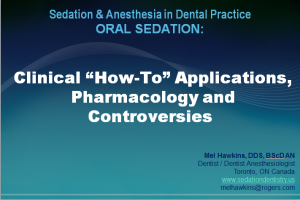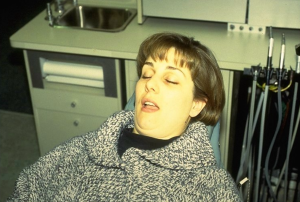Oral Sedation
Clinical Concepts and Current Controversies
Lecture recommended for Dentists, Auxiliaries, Registered Nurses
Program Synopsis:
 This presentation will discuss the pharmacology and clinical application of oral pre-medication. General pharmacological principles such as pharmacokinetics (what the body does to a drug) and pharmacodynamics will be reviewed. Safety of the benzodiazepines are emphasized and choices such as triazolam, diazepam, midazolam and lorazepam within this category are further examined.
This presentation will discuss the pharmacology and clinical application of oral pre-medication. General pharmacological principles such as pharmacokinetics (what the body does to a drug) and pharmacodynamics will be reviewed. Safety of the benzodiazepines are emphasized and choices such as triazolam, diazepam, midazolam and lorazepam within this category are further examined.
- Is oral drug administration necessarily safer than the other drug routes?
- What is the current status of “titration” and/or “incremental” oral drug administration?
- What is the current use of accessory drugs in oral regimens?
- What is the current status of monitoring , including pulse oximetry?
 Legal safeguards such as patient information and consent, control of office staff apprehension and personnel and professional responsibilities are explored.
Legal safeguards such as patient information and consent, control of office staff apprehension and personnel and professional responsibilities are explored.
Financial benefits to the practice far exceed the cost of a $0.09 pill.
Office protocol before, during, immediately after and beyond the sedation appointment are examined.
The “how to” and “how not to” tips from over 30 years of clinical experience will help incorporate oral sedation into a dental practice.
Learning Objectives:
- To update the current standards, principles and definitions of the American Dental Society of Anesthesiology and the Dental Organization for Conscious Sedation (D.O.C.S.)
- To understand what a drug does to the body and what the body does to a drug
- To review the pharmacology of the benzodiazepines and other drug classifications
- How to incorporate the “how, what, why, when and where” approach into a “resistant to change” office
- Effective Management of the Appointment Book: Pre and Post-Operative considerations
- Monitoring
- Financial benefits and legal safeguards
